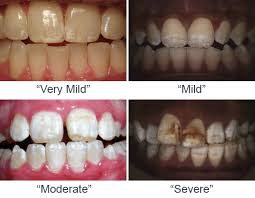Email sent Feb. 21 2020
Dear Members of Kingston Council and Ms. Lillicrap,
Attached you will find A cross-sectional study to compare caries and fluorosis in 7-year-old schoolchildren from a fluoridated area with those in a neighbouring non-fluoridated area in Ontario, by Dick Ito, DDS – a study that was funded by the Region of Peel.
This study compared 7 year old school children (matched on socioeconomic status) in fluoridated Brampton versus unfluoridated Caledon. The findings:
- double the rate of dental fluorosis in the fluoridated children:
- 34% vs. 16% with any degree of fluorosis;
- 9% vs. 3.6% with dental fluorosis of aesthetic concern;
- no difference in cavities rates: “The effect of fluoridation on caries in these communities was not evident...”
Even children in unfluoridated areas of Peel have been harmed by over-exposure to fluoride.
The Region of Peel’s 2003 Children’s Dental Health Report surveyed children aged 5, 7, 9, 11 and 13:
- “Among the Peel children surveyed, 13% overall were identified as having some form of fluorosis. Nine per cent had mild fluorosis, 3% had moderate fluorosis and 1% had severe fluorosis. Fluorosis could not be scored in 8% of students surveyed because the indicator teeth were not present. The proportion of Peel children with any or mild fluorosis by age is shown in Figure 3.1.” (page 14).
- Figure 3.1. indicates the following results by age:
5 years: N/A [too young to assess]
7 years: 8% with mild fluorosis, 3% moderate or severe; 11% with any fluorosis
9 years: 9% with mild fluorosis, 6% moderate or severe; 15% with any fluorosis
11 years: 12% with mild fluorosis, 6% moderate or severe; 18% with any fluorosis - 13 years: 11% with mild fluorosis, 4% moderate or severe; 15% with any fluorosis

- “The proportion of children with any type of fluorosis was higher in the fluoridated communities of Brampton and Mississauga than in Caledon which has not universally received fluoridated water (see Table 3.1). The prevalence and forms of fluorosis observed in Brampton and Mississauga were similar to dental survey results from Toronto which also has the recommended levels of fluoride in the drinking water supply” (page 15).

Following the above publications the Region of Peel stopped reporting on dental fluorosis in their “comprehensive” reports. The public demanded updated statistics.
In 2017, the Region of Peel reported on dental fluorosis, but only for children 7 years and younger (all lumped together), which is meaningless and misleading because the majority of these children were too young to assess (because the indicator teeth would not have erupted yet). Also it is not clear whether they reported on “any” fluorosis or only “moderate/severe” (as in Windsor, see below).
The Windsor-Essex County’s Health Unit’s dental fluorosis reporting
(in their recent highly-critiqued report that was used to justify
reintroduction of fluoridation) is even less scientific and more
misleading because they reported only on kindergarten children and only
moderate and severe fluorosis. Naturally, the prevalence was reported
as 0%.
The Windsor-Essex County’s Health Unit’s diagnoses of both cavities and fluorosis were based on a:
““no touch” screening … done by a Registered Dental Hygienist. A 10 to 30
second visual inspection of the child’s mouth…”
Dr. Limeback’s warning to Lakeshore Council about the unscientific Windsor report is available here: https://www.fluoridefreepeel.ca/fluoride-dental-expert-to-lakeshore-council-re-the-windsor-report-is-flawed/
Note:
Journal of the Canadian Dental Association (January 2002); 68(1): 21-25: Has the level of dental fluorosis among Toronto children changed?
“….Dental fluorosis of moderate severity (Tooth Surface Index of Fluorosis ≥ 2) was found among 14.0% of 7-year-olds, 12.3% of 13-year-olds and 13.2% of the 2 age groups combined.”
Fig. 4-3 from the U.S. National Research Council’s 2006 Fluoride in Drinking Water: A Scientific Review of EPA’s Standards plots prevalence of severe dental fluorosis in permanent teeth (under age 20) by water fluoride concentration, based on studies conducted outside the U.S.
Below, NRC panelist Dr. Hardy Limeback points out that U.S. studies had been carried out only on healthy children.
Health Canada Guidelines for Canadian Drinking Water Quality Guideline Technical Document on Fluoride, 2010:
Dental fluorosis: “a permanent hypomineralization of tooth enamel
due to fluoride-induced disruption of tooth development… in people
with high exposure… occurs only when exposure to fluorides happens
during tooth formation”
2012 Destination Peel: Immigrant and Ethnocultural Health Report:
“Fluorosis results in tooth discolourations which may range from patchy
white staining of the tooth enamel in its mildest form to pitted brown
staining in its most severe form.”
I have been unable to find any statistics available to the public showing the prevalence of dental fluorosis in the City of Kingston.
Best wishes,Christine Massey, M.Sc.
Brampton, ONFluoride Free Peel


